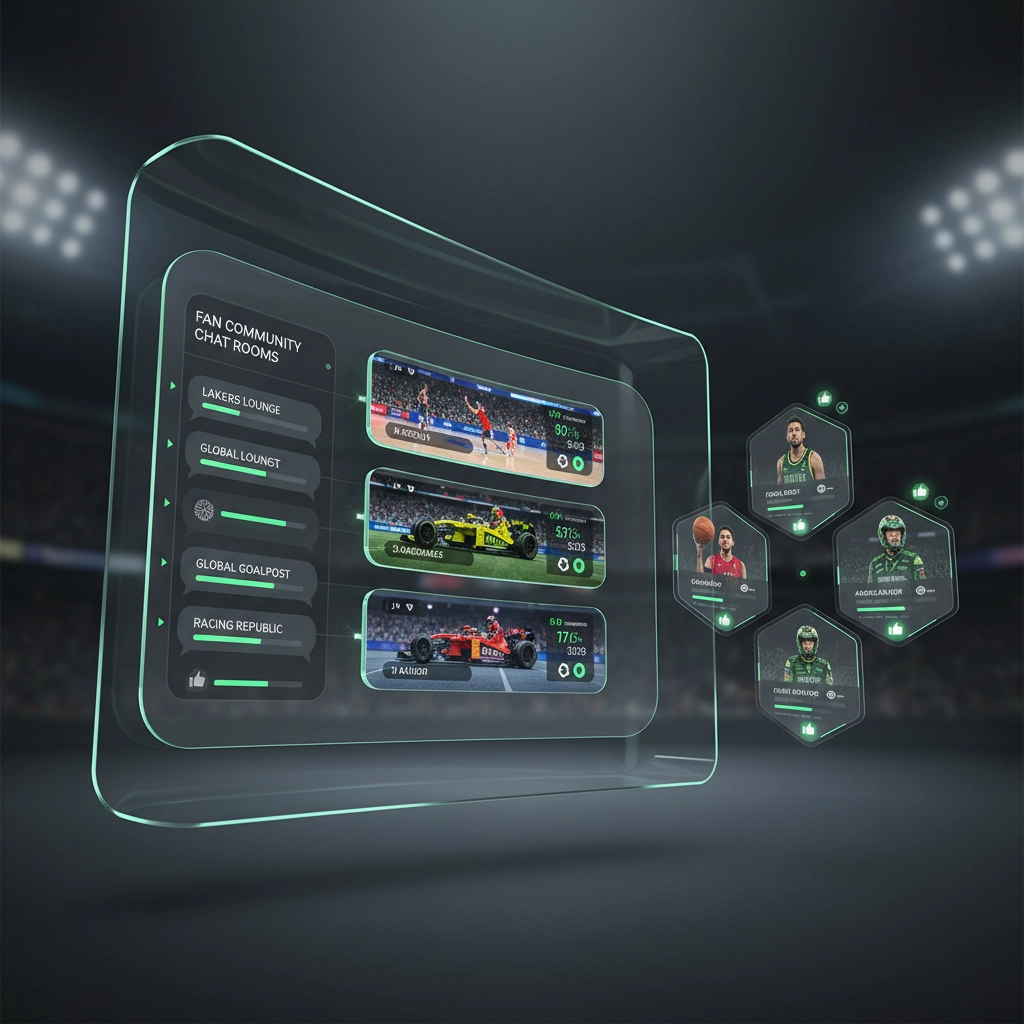The sports viewing landscape has undergone fundamental transformation. Data indicates a decisive shift toward streaming platforms, with traditional broadcast television experiencing diminished market share across key demographics. This transition presents significant implications for brand activation strategies and athlete monetization opportunities.
Current Streaming Adoption Rates
Statistical analysis reveals that 70% of United States sports viewers currently consume content through streaming platforms. Among these viewers, 40% utilize exclusively streaming services, while an additional 30% employ hybrid consumption methods combining streaming and traditional linear television. The data demonstrates streaming has evolved from supplementary viewing option to primary consumption method.
Nine in ten sports fans now maintain at least one streaming service subscription for sports content access. Projected growth trajectories indicate monthly sports streaming viewership will exceed 90 million users by 2025, representing substantial increase from 57 million documented in 2021. Year-over-year analysis shows 45% of sports fans increased streaming consumption frequency compared to previous periods.
Platform Distribution and Market Leadership
Amazon Prime Video maintains dominant market position, serving 65% of sports streaming audiences through content including Thursday Night Football, Women's National Basketball Association programming, and NASCAR coverage. ESPN+ captures 39% market share, while Peacock and Paramount+ each serve 37% and 32% of sports viewers respectively. Apple TV+ accounts for 17% of viewership through Major League Baseball rights and Major League Soccer content.

Platform fragmentation creates consumer challenges. Accessing comprehensive sports programming requires multiple subscription services, generating cost concerns among 68% of fans. Content distribution across platforms necessitates strategic navigation for optimal viewing experiences.
Demographic Analysis and Consumption Patterns
Generational differences in adoption rates demonstrate clear stratification. Generation Z users show 63% increased streaming usage over previous year periods, while Millennials report 56% growth. Generation X adoption rates reach 35%, with Baby Boomers at 21%. Among viewers under 35 years, 40% consume sports content through social media platforms, compared to 13% of viewers aged 55 and older.
The demographic divide indicates accelerating adoption trends as younger cohorts represent expanding portions of sports viewing audiences. Traditional broadcast viewership correlates inversely with age, suggesting continued streaming platform growth.
Brand Activation Opportunities in Streaming Environment
Streaming platforms provide enhanced brand integration capabilities compared to traditional broadcast methods. Interactive features enable real-time consumer engagement through live chat functions, polling mechanisms, camera angle selection, and comprehensive statistical displays. These capabilities create opportunities for brand activation campaigns targeting specific audience segments.
Social media integration within streaming platforms facilitates content sharing and community engagement, expanding brand reach through organic user distribution. Mobile-first design principles accommodate multi-device consumption patterns, enabling brands to reach audiences across various touchpoints simultaneously.

The emerging social media landscape for sports consumption presents additional opportunities. Platforms like the upcoming Fanz.us represent evolution toward specialized sports social networks, combining streaming consumption with community engagement and brand interaction capabilities.
NIL and Athlete Monetization Implications
Name, Image, and Likeness monetization strategies align effectively with streaming platform capabilities. Athletes can leverage streaming audiences through direct content creation, sponsored appearances, and brand partnership opportunities. Streaming platforms provide data analytics enabling precise audience targeting for NIL campaigns.
College athletes benefit from streaming platform demographics, as younger audiences demonstrate higher engagement rates with social media content and brand partnerships. The fragmented nature of streaming services creates multiple monetization channels for athletes across different platforms and audience segments.
Interactive streaming features enable athletes to develop direct relationships with fans through chat functions, exclusive content access, and real-time engagement opportunities. These capabilities support sustainable revenue generation beyond traditional endorsement models.
Market Valuation and Revenue Projections
The sports streaming market maintains valuation between $25-33.9 billion as of 2025. Live sports media rights spending in the United States reached approximately $28 billion in 2024, with competition intensifying among traditional broadcasters and streaming platforms. Revenue growth correlates with subscription increases and advertising integration.
Streaming platforms demonstrate willingness to invest substantial amounts in sports content acquisition. Competition for exclusive rights drives market values upward, creating opportunities for leagues, teams, and individual athletes to maximize revenue through strategic partnerships.

Consumer Concerns and Market Challenges
Despite adoption growth, significant consumer concerns persist. Cost fragmentation affects 68% of fans, with 73% indicating desire to reduce streaming expenses within six months. Multiple subscription requirements for comprehensive sports coverage create consumer resistance and churn risks.
Content discovery presents ongoing challenges. Fifty-four percent of consumers report increased difficulty locating sports content across multiple platforms. User experience inconsistencies between platforms compound navigation difficulties, potentially limiting audience engagement.
Technical reliability concerns include streaming quality variations, device compatibility issues, and internet connectivity requirements. These factors may limit adoption among certain demographic segments and geographic regions with infrastructure limitations.
Future Platform Development
Specialized sports social platforms represent emerging market segment addressing consumer fragmentation concerns. These platforms aim to consolidate content access while providing enhanced social interaction capabilities for sports communities.
The development of platforms like Fanz.us indicates market recognition of consumer demand for integrated sports experiences combining content consumption, social engagement, and brand interaction within unified ecosystems. Such platforms may address current market fragmentation while creating new opportunities for athlete monetization and brand activation.

Data Analysis Conclusions
Statistical evidence confirms widespread consumer adoption of sports streaming platforms across all demographic segments. Growth trajectories indicate continued expansion, with younger demographics driving adoption rates and establishing consumption patterns that favor streaming over traditional broadcast methods.
Market conditions favor streaming platform investment in sports content, creating competitive environment that benefits content creators, athletes, and ultimately consumers through expanded viewing options. However, cost concerns and platform fragmentation remain significant challenges requiring industry-wide solutions.
The streaming transition represents permanent market shift rather than temporary trend. Brand activation strategies, athlete monetization approaches, and consumer engagement methods must adapt to streaming-first consumption patterns to maintain market relevance and maximize revenue opportunities.
Consumer preference data supports continued streaming platform growth, with traditional broadcast viewership likely to experience further decline across key demographic segments. Market participants must develop streaming-native strategies to capitalize on these fundamental consumption pattern changes.
